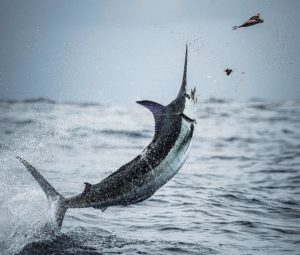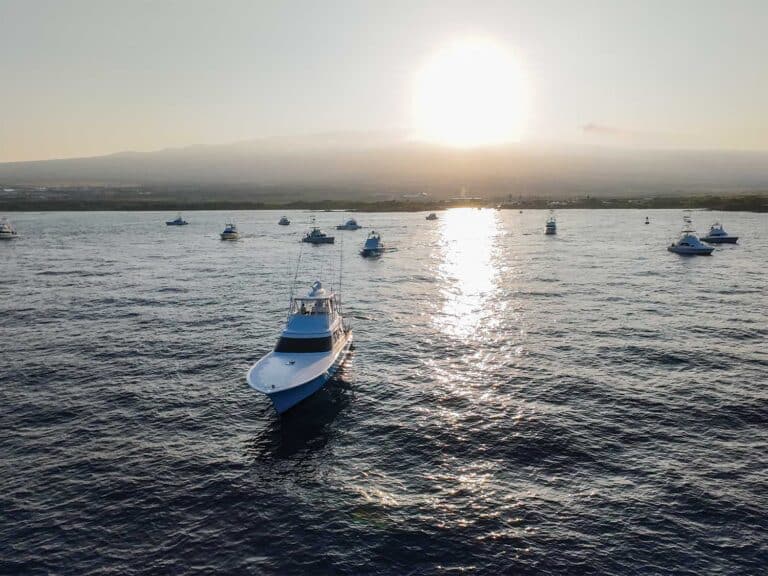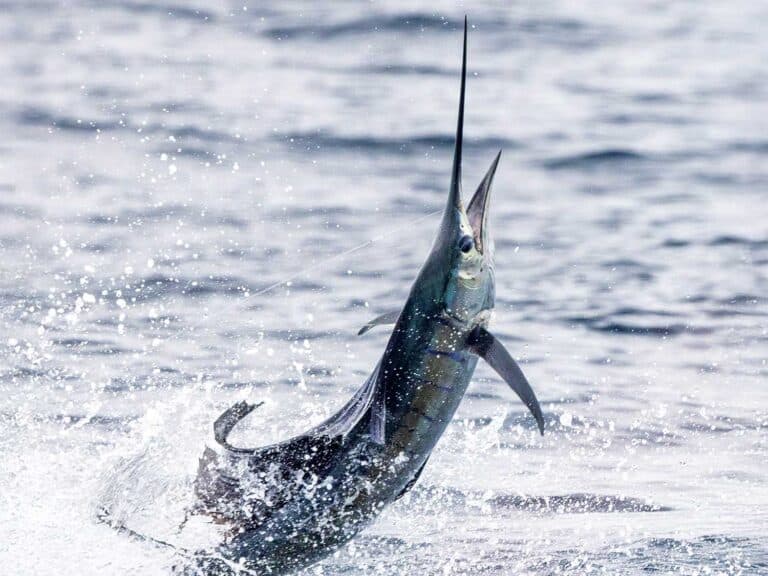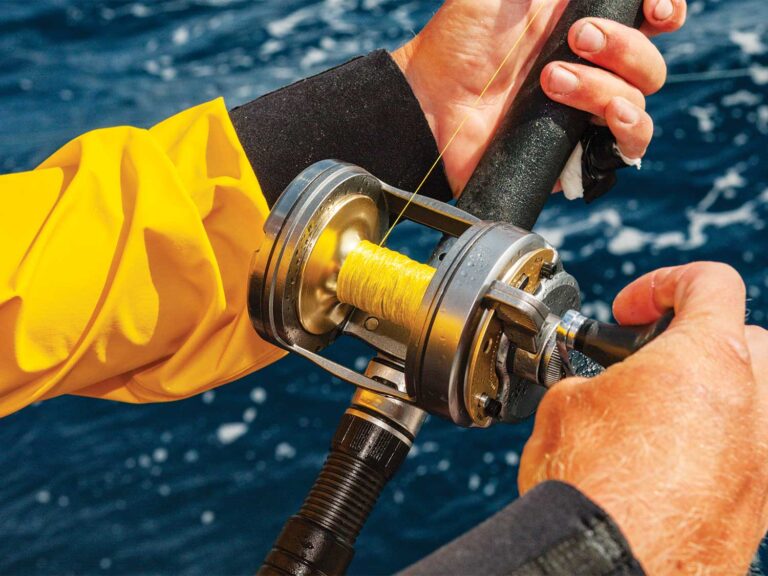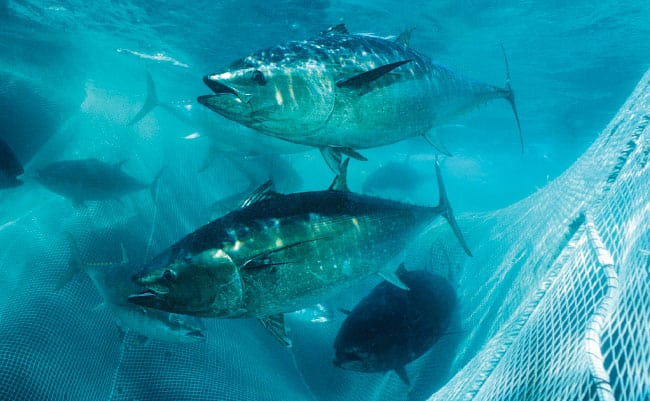
bluefin tuna
According to a recent article that appeared as part of a series in Commercial Fisheries News, western Atlantic bluefin tuna have never been overfished; overfishing is not occurring; their biomass is above the maximum sustainable yield; and a higher commercial quota is fully justified. The article was written by the executive director of the American Bluefin Tuna Association, Rich Ruais, who has been working with the bluefin-tuna industry since 1991.
Those holding the opposite point of view include numerous fishery scientists who think that bluefin are depleted, overfished and in need of additional protection. One of the more outspoken conservationists is angler and former National Marine Fisheries Service scientist Jim Chambers. He says that the adult population of western Atlantic bluefin is possibly down to about 3 percent of its unfished biomass of 1960.
How is it possible to have such divergent opinions? Scientists from many countries have studied bluefin for decades, yet they still can’t agree on whether bluefin stocks are overfished or not. They can’t even agree on how many separate stocks of bluefin exist, and they are not sure if undiscovered spawning areas exist in the Atlantic.
We know that there are two confirmed major spawning areas in the Gulf of Mexico and the Mediterranean Sea, but fishery managers have refused to protect these areas during spawning seasons. Political corruption, a commercially biased management agency and scientific uncertainty continue to contribute to the failed management of the world’s most valuable species. A single 489-pound bluefin sold at a fish auction in Japan for $1.76 million not long ago. That’s about $3,600 a pound. Why would anyone not want to protect such a valuable species? The answer: politics and greed.
Two Opposing Theories
Fishery managers and scientists accept that two theories exist regarding bluefin: low recruitment and high recruitment. The low-recruitment theory holds that bluefin are in good shape, whereas the high-recruitment theory views the stock as severely depleted.
The basis for the low-recruitment theory is that there is considerable mixing of the tuna spawned in the Gulf of Mexico with those spawned in the Mediterranean. The eastern bluefin, spawned in the Mediterranean, migrate to feeding grounds in the mid- and western Atlantic before migrating back to the Mediterranean to spawn. Back in the 1970s, no one had verified whether the Mediterranean bluefin made up a significant portion of what was considered western Atlantic bluefin. As the much larger eastern stock of bluefin declined, there were fewer fish to migrate westward to feed and be caught as part of the western commercial quota.
Scientists generally agree that the western bluefin spawning in the Gulf of Mexico weigh 600 pounds or more, which would make them 11 or 12 years old. However, for many years, ICCAT, the organization responsible for bluefin management, considered any individual animal larger than 320 pounds, or about 8 years old, as an adult capable of spawning. This was accurate for the Mediterranean bluefin, which spawns at a younger age, but not for its western relative. For this reason, the population of western adult bluefin was overestimated for many years.
The mixing of eastern and western bluefin varies by season and location in the Atlantic. Many more Mediterranean-spawned bluefin feed in the western Atlantic than vice versa, according to tag results and DNA studies. If scientists could only separate the two distinct bodies of fish, it would help them to determine the true size and condition of each biomass.
According to a recent scientific paper, a model used to estimate the bluefin population showed western and eastern bluefin populations at 17 and 33 percent, respectively, of their 1950-spawning-stock biomass levels. The same paper predicted that even if there were zero catches, it would take until 2025 for western bluefin to reach maximum sustainable yield. Eastern bluefin would supposedly reach that level by 2015. Of course, there is no way that bluefin landings will be reduced to zero.
Currently, managers set the 2013 quota for western bluefin at 1,750 metric tons. The eastern bluefin quota is 13,400 metric tons. At these levels, the estimate is that western bluefin can never recover, even if U.S. fishery managers closed their Gulf of Mexico spawning grounds — a highly unlikely prospect.
Enter Molly Lutcavage
In researching this column, several sources directed me to recent studies performed by Dr. Molly Lutcavage and associates. She and Dr. Barbara Block are considered to be two of the leading authorities on Atlantic bluefin, both having conducted extensive tagging studies. Lutcavage has been studying bluefin tuna full time for 20 years.
Lutcavage and her associates recently published a paper predicting potential spawning grounds for western Atlantic bluefin. The study was based on information received from pop-up satellite tags placed on tuna tagged in foraging grounds in Canada and New England. They noted that the larger bluefin entered the Gulf of Mexico in February and March and remained there for several months, including throughout their spawning time, which is in May and June.
Interestingly, some of the smaller bluefin did not migrate to the Gulf of Mexico. Rather, they were at times located in oceanic conditions similar to known spawning areas. It raises the question: Do some smaller bluefin spawn in areas closer to their foraging grounds, near the Gulf Stream, Bahamas or Caribbean Sea?
In another study by Lutcavage and associates, more than 500 bluefin were studied for reproductive maturity. The researchers noted that a female estimated to be 6 years old was found to be mature. Scientists also found male bluefin, estimated to be as young as 5 years old, that were reproductively mature. Could these tuna simply be part of the Mediterranean stock that are known to spawn earlier than western bluefin, but were foraging in the western feeding grounds? Could they be bluefin that were mature but not actually spawning yet? Or could they be part of a separate body of tuna that are reproducing earlier in the Atlantic in as yet unconfirmed locations? It’s a mystery that has yet to be solved, but it could have a very significant impact on estimates of western bluefin spawning-stock biomass.
In yet another study by Lutcavage and associates, the complex migration routes of bluefin were studied. A total of 41 pop-up satellite tags were placed on adult tuna off Nova Scotia and Georges Bank. Of those tags, only 56 percent occupied known spawning areas during their known spawning period. The other 44 percent popped up in distant regions not currently proved to be spawning grounds. Why were they there during spawning season?
In order to prove the theory that additional western bluefin spawning grounds exist, other than those in the Gulf of Mexico, scientists need to do more studies. So far, they have not found bluefin larvae or young in other suspected spawning areas. Although they know that reproductive-age tuna have been in these areas during spawning season, they have no proof that the females were actually ripe and ready to spawn. Could it be that smaller bluefin spawn every year and simply migrate around wide areas, raising all these questions?
Dr. Lutcavage has published some 58 scientific papers. Her tagging studies raised the possibility of additional spawning locations almost 15 years ago, but, as of yet, there’s no definitive proof. Bluefin is one of the most studied species in the world due to its high commercial value, and yet there is much to be learned.
What bluefin tuna has taught us is that the more valuable a fish becomes, the less likely it is that it will be managed successfully. Due to its highly migratory habits, it must be managed internationally. The majority of countries involved in the management process appoint representatives with major conflicts
of interest. Nearly all representatives serving on ICCAT’s management board can be traced back to the commercial-tuna-fishing industry one way or another. In other words, the fish hawks are guarding the fish.


